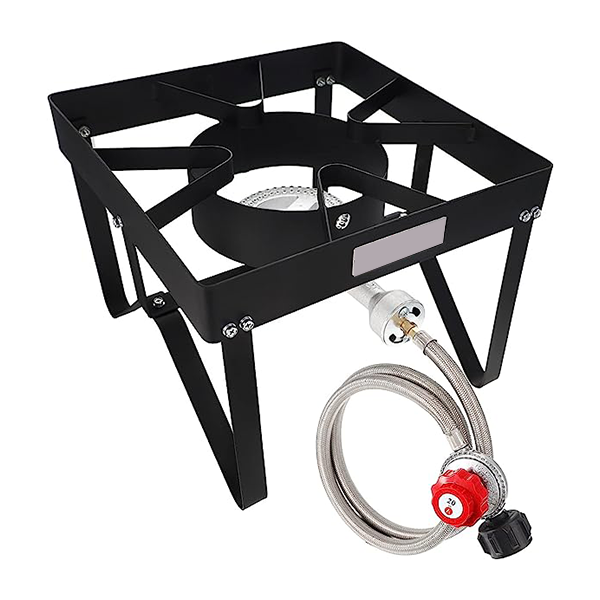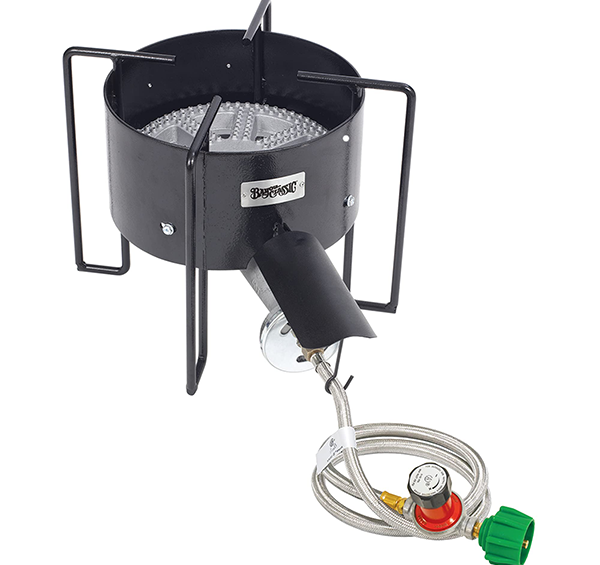Propane stoves are a popular choice for both indoor and outdoor cooking. It is known that they are pretty efficient, portable, and reliable. Whether you’re preparing meals at home or in the great outdoors, following important safety measures makes your experience with propane safe and fun! Here we have some safety tips for you that we recommend you follow when using propane stoves.

- Correct Setup and Placement
Place your propane stove on a stable and flat surface to prevent it from falling. For indoors, position the stove in a well-ventilated area, away from flammable materials like curtains or paper towels. For outdoors, keep the stove away from dry leaves, overhanging branches, and other fire hazards. Always check local regulations regarding the use of propane stoves in outdoor areas to avoid fines.
- Checking the Stove Before Use
Before using your propane stove, inspect it for any prominent damage. Take a look at the burners, hoses, and connections, as there can be signs of rust, cracks, or leaks. If you notice any issues, you will need to repair or replace the damaged parts before using the stove. Regular maintenance can help prevent accidents and ensure efficient operation.
- Safe Lighting Practices
When lighting your propane stove, follow the manufacturer’s instructions properly. You should start with lighting a match or activating the igniter before turning on the gas. This way, gas would not buildup, which can lead to flare-ups or explosions. If the stove has an electric igniter, ensure it is working correctly before using.
- Maintaining Proper Ventilation
Adequate ventilation is required when you are using propane stoves in indoor places. Proper ventilation reduces the chances of buildup of harmful gases like carbon monoxide, which can be hazardous. You can allow fresh air in by opening windows or using exhaust fans. Installing a carbon monoxide detector is a wise precaution for your safety.
- Safe Usage During Cooking
Keep an eye on the stove while cooking. Always stay close by to observe the flame so no accidents occur. Keep flammable items like paper towels, plastic utensils, and dishcloths away from the stove. Using flame-resistant cookware can also increase safety.
- Handling Grease and Food Spills
Grease and food spills can cause flare-ups, so it’s essential to clean them. Turn off the stove and allow it to cool before you wipe off spills. Regular cleaning of the burners and grates enhances the performance of the stove.
- Using the Stove Outdoors
When using a propane stove outdoors, be mindful of the direction of the wind. Wind can blow out the flame. It can even cause it to spread, which increases the risk of fire. Position the stove with its back to the wind or use a windscreen to protect the flame. Additionally, never use the stove inside a tent or enclosed space, as this can lead to carbon monoxide buildup.
- Emergency Preparedness
During an emergency, it’s vital to know how to turn off the propane supply quickly. Ensure everyone in the household or camping group knows the location of the shut-off valve and the directions to close it. Keeping a fire extinguisher nearby is also recommended when using propane stoves.
- Regular Maintenance
Routine maintenance of your propane stove ensures its longevity and safe operation. Clean the burners, grates, and other components regularly. Check the manufacturer’s guidelines for specific maintenance recommendations. Follow them properly.
- Choosing a Propane Stove
Select a high-quality propane stove from a reputable store. Look for stoves with safety features like auto-shutoff valves, sturdy construction, and reliable igniters. Reading reviews and seeking recommendations can help you choose the best propane stove for your needs.
Conclusion
By following these safety tips, you can enjoy the benefits of using propane stoves at home and outdoors. Proper setup, regular maintenance, and safe operation practices ensure that your cooking experience is not only efficient but also safe. As a home chef, understanding and implementing these safety measures will help you make the most of your propane stove while prioritizing safety for you and your loved ones.


